10 Neurodiversity and Ungrading
by Michael Weingarth
October 29, 2021
TLDR: The average cost of educating a child who’s in a special education track is, at it’s most conservative estimate, FOUR times that of a child who’s not in a special education track.
It is a deep and serious problem that deserves deep and serious consideration. The considerations are below. Sorry if that wasn’t bullet-pointy enough.
The Too Long, Still Reading part: Whatever you expect, be prepared for students to experience it in completely different ways and ensure they can voice that back to you. If you think metacognition is helpful, be prepared for it to cause a bad reaction in some students. Understanding neurodiversity is not hard – it just means understanding that most of what you assume will work is likely derived from a series of ableist assumptions about brains, the world, school, intellect and ability. Ten minutes of quiet metacognitive reflection for one kid is ten minutes of looking-out-the-car-window-at-90-miles-per-hour for another. Don’t be this guy:

We teach all subjects in a way that actively ignores a ton of useful and relevant science, and, in doing so, we marginalize kids – here’s how we do that in k-12 math. So if you want to do inclusive #ungrading to help your students with learning differences, neurodiversity, or whatever other label helps them identify their years of marginalization at the hands of the educational system, then I have some advice for you: dismantle everything you think you understand, and be prepared to build it from the ground up by learning not about the interventions and strategies, but about the students’ individual ways of compensating in an exclusionary system, and how that system contextualizes their entire experience up until your classroom. It’s annoyingly complex, but we’ll walk through why you need to do this and get you started on how to do it. And fear not, people who hate reading! I brought memes!
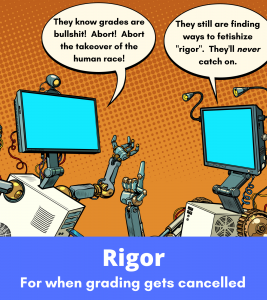
- A Label By Any Other Name
There is so much good done by #ungrading. I don’t mean to diminish any of it in what follows.
There is so much good done by the label #neurodiversity. I don’t mean to diminish the impact that term has had in moving the language around learning and especially around autism away from deficit-model disparagement in what follows, either.
But-
It is one thing to talk about neurodiversity and how it’s a different way of learning/existing, and it’s another thing to deconstruct the ableism that makes a term like neurodiversity necessary. It’s one thing to say “I have a nifty list of hacks for these populations” and another thing to realize that “these populations” are humans, children, mighty balls of untapped potential awaiting recognition and validation from an educational system that was designed to withhold those very things.
It’s one thing to want to do #ungrading because grades are unhelpful, punitive, and encourage short-term thinking about educational priorities.
It’s another to say neurodiversity is both essential to our discourse and an unfortunate by-product of choosing to do education in a way that marginalizes 20-40% of the US high school population by refusing to change. And then trying to build a classroom model that reflects this complexity and dismantling ableism in your pedagogy.
So here’s a nifty list of hacks!
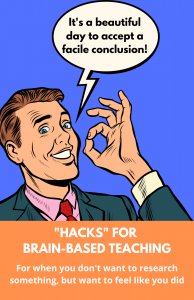
The idea that there exists a separate population of students who “learn differently’ from everybody else is a systemically oppressive way of thinking about brains. All brains compensate and have compensation patterns.
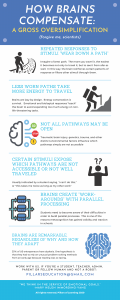
The only reason that #neurodviersity as a construct exists is because society and education created the illusion of a norm and proclaimed “here are the acceptable ways to function, learn, and exist in a school context, and that anyone who functions, learns or exists outside of these ‘norms’ gets a tag.” And then the tags turned out to unhelpful and denigrating, or gaslighting because they are used to segregate out students who struggle: special, different, learning disabled, aberrant, abnormal, difficult, and so on.
Neurodiversity as a label grew into existence to push back against those labels in the late 90’s, coined by Judy Singer, and the advocacy of the #actuallyautistic population and allies did wonders to re-engage discussions about humane and human-centered education in an age where studies like the 10-K Spectrum study still exist (you can follow @BoycottSpect10k to get more information on that fucking horror show).
So the label itself has legs, purpose, value. In the past ten years or so, it has also been used to describe a wide variety of brain-based (or you might say “neurobiological”) learning differences, and now it’s not uncommon to hear people talk about ADHD, dyslexia, dyscalculia, processing disorders, and even mood disorders or mental health issues as #neurodiversity. In this chapter, I’ll be using it to describe specifically issues around neurobiological differences that make school difficult for one reason or another. Spoiler alert: the reasons are school and ableism.
2. Mommy, How Are Norms Born?
The idea that so many humans are so vastly outside the “norm” of “learning” isn’t necessary – the educational “norm” is an illusion based on faulty assumptions about merit and worth and potential. Norm-referencing in educational contexts gained prominence during the xenophobic, racist, ableist Eugenics movement in the 1900-1930 period. I have about 3500 words and some exquisite #neurofluffers in this article which details precisely how a few Shady Chefs cooked up a recipe for eugenics: invent some science, norm-reference it to look math-ish, and then publish, publish, publish.
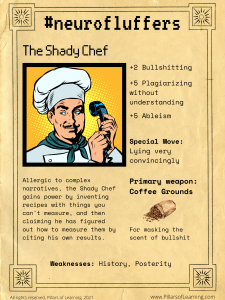
Outside of that narrow, completely arbitrary, not to mention utterly unscientific conceit of “measurable intelligence,” there lies a very different truth: everyone, literally everyone has some kind of inefficient breakdown of compensation patterns that lead to what would appear to be “learning difference” – you just need to find the right circumstances and combinations of stimuli. No one is “not learning disabled” if you dig hard enough to create the contexts that produce “inefficient” cognition. We just rarely see school and work try to pinpoint precisely where and how the intersection of emotion, nutrition, trauma, development, endocrinology, and social factors create logjams in brains.
Why? School itself operates on a survivorship-bias model of learning difference identification: if you are doing fine, there is no issue.
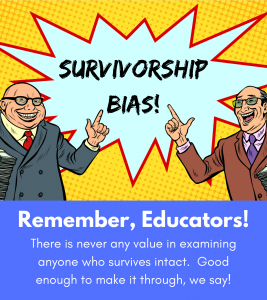
But if you are struggling, there might or might not be something deeper. The belief that you can be both smart and struggling in school is generally not tolerated by most traditional educational models in the US. To boot, “cognition” as a field of psychology/science research has historically sought to isolate emotion so it can study “raw cognition”, which in turns leads to reductive “evidence-based” studies being promoted as the thing to boost “better outcomes” usually measured in terms of grades or standardized tests. If those tests are norm-referenced, even worse:
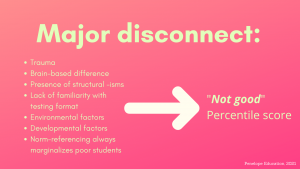
The mere belief that you CAN isolate emotion out of cognition is the first problem: right away, if you’re facing trauma, systemic oppression, or more pollution that impacts your neurodevelopment, well, fuck you! It’s now your fault because “science” says you should be able to learn better with Branded Teaching Method X…developed in a lab where none of those variables were even considered. Because according to the context-less science that’s informing school policy and professional development, brains exist in a vacuum. This kind of nonsense is actually sweeping ed policy discussions in Australia and the UK right now. You can take a peek at the kind of madness by looking at “researchED” conferences or #edutwitter white people flexing on “learning styles” with “Cognitive Load Theory”. All of which, by the way, is neurofluff.
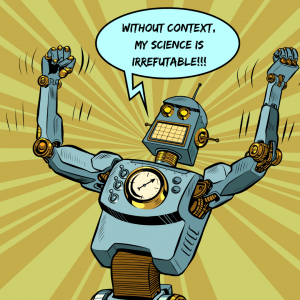
You’ll be glad to know that the context of the environment outside of the classroom actually matters a lot and should inform how and why you teach. Context is content. Mary Helen Immordino-Yang, affective neuroscientist, said “it is neurobiologically impossible to make complex decisions without emotion,” and if you read her amazing and expansive book Emotions, Learning, and the Brain, you’ll discover that the emotional context of most experiences “codes” the stimuli and experience of learning events. If students don’t feel safe, there’s an emotional cue that sticks to that set of stimuli and contexts. If they feel safe and valued, that also sticks. While I’ve been saying this a long time from my own experience working with students who do not get accurately evaluated or helped by the evaluation process, many others have done far much deeper and more thorough work on teasing out why this matters to teaching, notably Zaretta Hammond in her rich and expansive but still accessible book Culturally Responsive Teaching and the Brain. Two other incredible individuals doing this kind of study, research, teaching, and advocacy are Dena Simmons at Liberated and Selena Carrion.
So this omission of context- emotion, safety, etc – is essential to consider because it impacts how accurately learning issues can be diagnosed. Emotion, trauma, systemic oppression, etc are not considered on the tests that are most commonly used to look for learning differences on the first try – a full-scale IQ test or other “psycho-educational” tests. Referrals for learning struggle usually take anywhere from 10-60 days to result in one of these tests (depending on state), and then it may be another 30-60 days to get a second set of tests to dig through inconclusive results. Yikes.
Worse and probably more importantly, the methods used to determine these differences are troubled by bias – in particular racial bias that diagnoses BIPOC and Latinx children more often with “behavioral” issues rather than “cognitive” ones. Why? Because of structural medical bias/racism and because the tests themselves are built on the work of eugenicists without a lot of movement towards understanding the intersection of memory, emotion and learning. That inauspicious set of circumstances is how a diagnosis, intervention plan, or set of recommendations for a student begins. If you wanted further proof of this, those first-tests-we-give full-scale IQ tests are categorically not designed to locate learning difference and cannot do so for a wide variety of learning differences (non-verbal learning issues, executive functioning interactions with processing, autism, sub-types of dyslexia and dyscalculia, and more!)
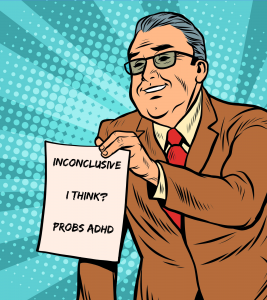
3. Weeeeeeeee, are Never Ever Ever, Getting Back Together, School
So, when we get back to thinking about how to teach, it’s important to understand how this clusterfuck impacts a child in terms of how education “feels” from that point on. After this very troubled process locates an issue (or doesn’t), students get a label, most often a negative one associated with not being able to do something. Without any consideration for how and why this label may or may not be accurate, the student becomes aware of their difference as something that means they are “not good at”. Some schools mitigate this by not segregating students out of Gen Pop (that is a carceral reference, you are correct). Some states have better legislation around what constitutes a learning disability and what doesn’t, and some states have hardly any legislation at all. Dyslexia, in particular, has some interesting legislative differences.
As a student, it’s a total lose-lose model; it’s impossible not to feel the result of these labels OR the evaluation process -both put in place by the deficit model of special education. If something shows up, you get a label, and if nothing does, it’s impossible not to feel insecure about your intellectual abilities when even the teacher can’t understand how to help you and a diagnosis doesn’t reveal anything.
And that’s where we get half-baked ways to address these gaping fissures, mostly thought up as ways to not let go of grading but still do something vaguely not oppressive.
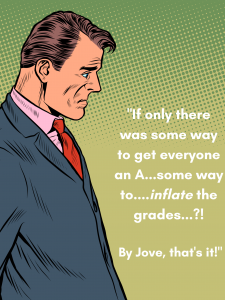
4. The Context is Content
Reinforcement of those unsafe contexts is a lesson in and of itself. Inside the classroom, if it echoes the things that happen outside of it, is simply more ableist messaging for anyone who actually received an accurate diagnosis: you have thing X wrong with you, the solution is thing X, designed by researchers who studied the population you belong to, since you don’t belong to the normies, and there’s why that will work, without any of your input or considerations. They are hearing, “here is a nifty list of hacks for learning for your aberrant and non-normative population” for the entire time they are in school.
The mythical and far-off-in-the-future “real world” does a lot to create a belief that school is representative of the future: some of you get to “thrive” in the meritocracy because of your talent, brains, worthiness – which are actually just false premises based on a completely fabricated set of beliefs about ‘measurable intelligence’.
And because the system has to be zero-sum, some of you do not get to thrive.
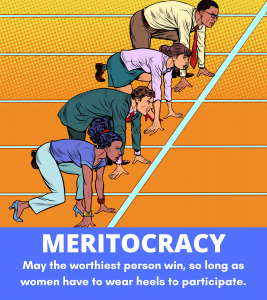
Maybe you heard this as you went through school.
In reality, 35% of entrepreneurs have some kind of identified learning difference. Based on what I’ve illustrated about how unreliable and limited the tests are, imagine what that number really is.
So what do you do in the face of all that baggage?
A). Know as much as you can about the actual science behind learning issues (neuropsychology, affective neuroscience, and culturally responsive teaching are excellent starting points)
B). Tailor what you do to your learners with their input.
Anecdotally, I work mainly with students who have “fooled” the evaluation process. They receive no diagnosis, an evolving one, or an incomplete one that often leaves out important components of the student’s learning profile. Everything that actually helps my students is approved by the student: co-constructed, tailored, customized with their input and reactions and responses. Do they need helpful context to understand why and how the ways we consider intelligence, mental health, physical health, systemic oppression/racism/misogyny and environmental factors like pollution and financial stability influence their learning? Fuck yes, because there is no such thing as “meritocracy” or “measurable intelligence” and most of the kids are relieved to find they’re not “dumb” or “bad at” or whatever other labels they’ve carried. My work is pretty simple: I tell them what I think might work, why I think it might work, I ask them what they think. Sometimes they say no. Sometimes they only like a portion of what I’ve suggested. We try, together, to see how it goes. Does it always work? Not at first. But we keep the communication open, we cross-reference, we learn how we can help each other. We teach each other how we can work together. There is no power dynamic. There is no punishment. There is no grading. Just like you’re trying to do, because A). it’s helpful in building trust in the context and the relationship with your students but also B). finally no more papers to grade! (forgive me, I used to be a high school English teacher)
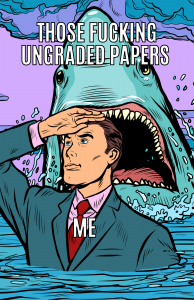
In stark contrast to that effective way of building trust, the US high school curriculum in most school systems is almost exclusively pre-constructed, informed by research done on neurotypical individuals, actively marginalizing 20% (or more) of the US high school student population with learning issues, because it’s expedient for teaching 20-30 kids in a classroom and because we have done it that way in the past. Worse, everyone in the Dept of Ed says: we need rigorous and empirical evidence to back up what we say. Rarely are the funding sources for those studies front and center and critically examined.
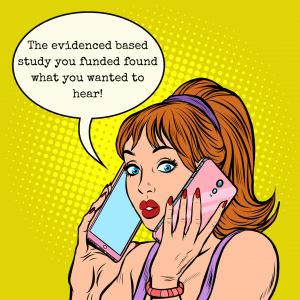
The reason I’m saying go to the research and the anti-ableism work to start and then build it on student reporting and your own knowledge base is because studies, interventions, etc. aren’t always looking in the right places – they’ve got all the issues I’ve mentioned previously AND they’re usually looking on short time frames for results, just like grades are short-term constructs designed to enforce immediately measurable measures that may or may not be the thing that helps.
Consider developmental timelines: children raised bi-lingually speak later than children raised in single language households. Bi-lingual exposure must delay language development then! That’s observable behavior. If you dive into it, bi-lingual language acquisition creates richer neural networks which have good implications for future learning AND can cause delay or smaller observable vocabulary acquisition. The longer your view, the more context you can examine- this may or may not be the most expedient or cheap way of looking at experiments and studies. But it would be better than slamming on the gas the minute we’ve established one tiny, isolated, context-less thing correlates with another tiny, isolated, context-less thing. That’s #neurofluff in full effect, echoed by the Not-An-Expert mouthpieces shouting that it is proven, it is written, it is real.
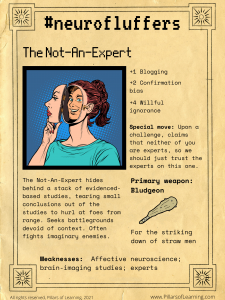
5. Where to go from here?
I hope by this point I’ve thrown a wrench into any assumptions you had about identifying learning struggle with any degree of precision. And because you can’t and won’t know if a diagnosis is actually accurate and how traumatized your students are at any point, your best bet is to simply be staunching anti-ableist from the outset and work hard to earn the trust of your students, and go to the source of the issues – the neurobiology of learning (note: the Science of Learning is is usually drawn from studies conducted in those context-less vacuums, and it is very different than looking at neurobiology, neuropsychology, and any neuro-imaging field of science that examines learning,).
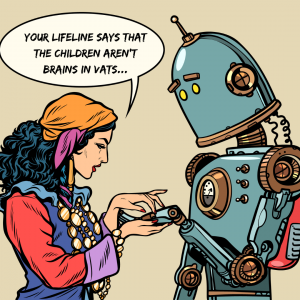
In the mother of all plot twists (Dumbledore grades at the end!), here is a list OF STARTING STEPS, none of which are hacks or interventions. It is by no means meant to make you into an anti-ableist coach or anything. It’s what I’d recommend to prepare your own knowledge base to meet your learners where they are. I am speaking solely on my experience of discovering how and why the evaluation process for learning difference is so fraught with uncertainty and imprecision and bias/racism/misogyny. But to quote the imitable Sir Charles Barkley:
I am not a role model. And there’s a ton more you can (and should) look into after you finish reading to “do the work”.
The list:
- Know the Context: Know some history (which you have some already in this article). Look up how and why the term neurodiversity was used beyond what I’ve included, and understand the autistic human community will have different connections to the word than someone with say, dyslexia, who’s using it to describe broad differences in structural or adaptive brain pathways. Know legislation in your state about dyslexia screening, about early childhood interventions for behavioral, physical, and cognitive support, and for your school and whatever systems feed into it, learn about the timeline and process for evaluation of learning difference.
- Awareness: Learn about ableism. Look for it. Search for it on Twitter. See if a disability advocate works at/with your institution or if student services/HR has someone who can talk you through building codes and accessibility policies at your institution. Make it a challenge to consider new ways you can make your space, materials, and teaching more accessible to more humans, no matter what- ESPECIALLY around physical disability, which adds a whole new layer to everything in this article and often compounds the biases/marginalization if a student has a physical disability alongside learning difference. A google search will reveal a lot, just google “ableism” and let it fly. Go through 10 articles. Then do the work.
- Acceptance: Accept any ingrained ableism you have. Accept that it’s a process and that you should feel a helpful pang of guilt when you fuck up, and that you’re unlearning years of messaging from society. That’s part of the work. We live in a world dominated by ableism and it’s simply too hard to go from 0 to anti-ableist in 0 seconds. And accept that students will view #ungrading as a trap until trust is established. Trusting anyone in a system that has taught a student to expect marginalization takes time and consistency. Be patient. Be consistent. Apologize for mistakes, admit your newness when you’re new, adopt a “do-no-harm” mindset and be prepared to do repair work. Trying is important. Being an ally and accomplice in disrupting ableist systems is important.
- Practice Listening: In particular, be consistent about asking for input, for help, for guidance from your students when you’re teaching. Listen, listen, listen. Everyone has some degree of immeasurable brain-based issue that may manifest at some point. Everyone is worth considering as you design ungrading tasks, projects, assessments, etc. “Neurotypical” and “neurodiverse” are two categories that more helpfully illustrate the ableism that divides humans from one another than anything else. Not all educational pedagogies counter this. Doing Universal Design For Learning does not undo ableist assumptions about intelligence, for instance.
- Hold Space: Know trauma. Look up complex trauma and c-PTSD. Look up adverse childhood experiences (ACEs). Look up abuse, but especially emotional abuse – from parents, from peers, from school systems, from medical practitioners. Look up the systemic marginalization that structural medical bias creates for non-white students seeking learning evaluations.
- Share Knowledge: Read neuropsychology, specifically about learning differences. The clinical differentiations and determinations of learning disabilities and respective labels/diagnoses is important because it tells you how and most likely when your students got their labels, and if those labels are correct. For writing teachers, Steven G. Feifer’s “Neuropsycholgy of Written Language Disorders” is essential, and “School Neuropsychology: a Practitioner’s Handbook” by Hale and Fiorello is informative (though technical and dry). I would advise you to stick to neuropsychologists like Feifer who believe that we should replace “learning disability” with “learning dormancy” and who also seek to move away from the legacy of IQ testing and design cheaper, more targeted tests that help inform both student and practitioner where challenges in school settings may lie. Knowing that IQ tests often don’t identify issues for twice-exceptional students changed my life, but it changed the life of every twice-exceptional student I explained that to even more.
While you’re at it, also read up on neurodevelopment, developmental psychology, executive functioning, and most importantly: cultural competency and cultural relevance. As mentioned, Culturally Responsive Teaching and the Brain by Zaretta Hammond is a wonderful and accessible text. Emotions, Learning, and the Brain by Mary-Helen Immordino-Yang is another one. These types of texts provide a lot of context to the ableist framing of intelligence and the “contextless science” garbage you see slung around on #edutwitter so frequently.
- Co-learn, co-teach each other how: Ungrading already removes the need for arbitrary constraints on potential. Use this opportunity to understand your fellow humans more and understand you more – meet them where they are, and let them know you’re just as eager to be met where you are. Individualize as much as you possibly can. The more personalized, tailored, and customized the assignment, the more investment you’re going to have for any student who has felt unseen or dismissed in their past. Obviously, you may not be able to do that all the time. But whenever you can, try.
Thanks for sticking with me. If you’re curious about how I came to this curious place of understanding learning difference and teasing apart reductionist bullshit, the origin story begins in grade school: because I was labeled “smart” and “bright” from an early age, when I encountered tremendous difficulty with handwriting, the conclusion teachers and my parents arrived at was that I was lazy – that I write “slow” as if I was “stupid”. Clearly I wasn’t “stupid”, whatever that means, so that left character, motivation, and other things to take the blame for this failing.
A poignant, still-stinging memory: a fourth-grade math teacher held up my work, called it sloppy and disrespectful, and tore it up in front of the class. She told me I would never succeed with that kind of laziness.
I never got an accurate diagnosis because no one even thought to evaluate me, that’s how ingrained the assumptions were about what a “smart” person was “capable” of. According to everyone, I was “capable” of beautiful handwriting. And so then the narrative was “Whelp, guess it’s your work ethic and your timeliness and your attention to detail, here’s your C+. Try your hardest next time, get some study skills, etc,” all of which is coded language for “You are not enough and I don’t care to help you discover how to be more than what I assume of you.”
Maybe you heard that version going through school. I hope you didn’t, but I know from the students I work with that holding complexity is difficult for many teachers who have deep, hard-to-shake beliefs about what “smartness” looks like, acts like, writes like, talks like, reads like. And how dangerous those beliefs are to children who do not understand why those beliefs dictate the feedback they receive.
I couldn’t hold it, either. I visited these same assumptions and beliefs upon a 9th grader in my first teaching job. She had undiagnosed dyslexia and had somehow managed Bs in 7th and 8th grade at the “rigorous” private school we were at. She failed a grammar test I gave in March, and it seemed unusually low for her, based on what she was doing in class. When I gave her the test orally, she got a 91 percent. A week later she had a sub-type of dyslexia diagnosed because our school could afford to send her to a private evaluation with a thorough neuropsychologist who does good, culturally competent evaluations. The report said she had been using audio books and having her parents read aloud to her, and never wanted to tell any teachers that she had difficulty reading because she was afraid they would think she was stupid.
I left teaching full-time a year later. Partially because I couldn’t handle the prospect of doing that to another student: the sting of utterly failing that student through my own ignorance of how and why reading difficulty manifests was intense. The culture of rigor and “high-achievement” at the school didn’t help either. But mostly it was because I whiffed when I thought I was doing the right things to meet kids where they are, reading Pedagogy of the Oppressed and rhetoric and composition theorists like Peter Elbow. A few people I told the story to said there was no way I could have known, and that’s really what gets me after all these years: I very fucking well could have, if all of us bothered to care about all the humans we teach, not just the ones who fit within a narrow and marginalizing system.
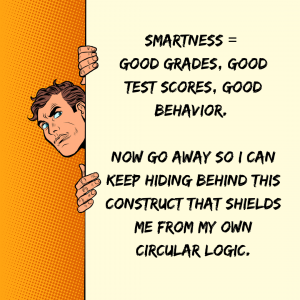
I hope this helps you avoid that trap. May you lift others and yourself up through the work you do. May you see what we have always known:
Human potential is infinite and cannot be measured.

